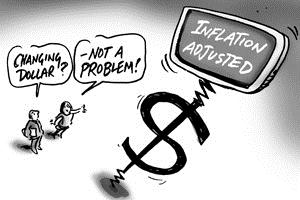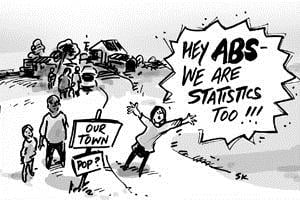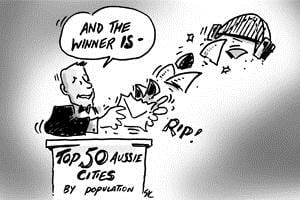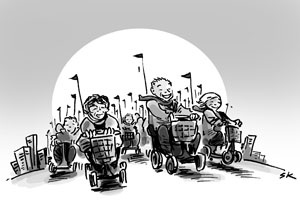By - glenn the census expert
Where will the children play?
I recently ran a training session at the City of Bankstown, in Sydney’s south-west. This is a fascinating area, demographically. It is one of the most culturally diverse areas in Australia, with 55% of the population speaking a language...
Marriage and relationships in the Census – Do women prefer educated, high income partners?
There is a theory that, when selecting a man as a long term relationship proposition, women are more likely to look for status and income, and men are more likely to go for looks and youth. While certainly...
How much is agriculture really worth to your economy?
They say Australia was built on the sheep’s back, but it’s well known that Agriculture has been a declining sector of the economy for quite a while. At least as far as employment is concerned. In terms of the...
Understanding the characteristics of tourism and hospitality in your area
Recently, we have added the “industry focus” section to economy.id. This highlights some extra datasets on specific industries which aren’t well represented in the rest of the site. They are not turned on by...
When will the age pension be abolished?
Esther’s recent blog on dependency ratios got me thinking. We are moving towards a time when we will have far more non-working population as a proportion than ever before, particularly as the baby boomers age...
Flinders Island – our smallest population profile is now online!
Do you think your council is too small for a community profile? When .id first put profile.id together, we thought it would be useful for large metropolitan councils to look at differences between suburbs. It...
Fly-in/Fly-out workers
The phenomenon of the fly-in/fly-out worker has been a growing trend in Australia for the lasts 10 years or so. With the massive expansion of mining in many remote areas, Australians have shown a preference not...
Check the data notes!
I know it’s boring, but some of the most useful information in the .id demographic tools is hidden away in a link at the bottom of each table. In profile.id, as well as having the exact wording of the Census...
The nation keeps growing, and WA and Victoria lead the way
The Australian dollar may be sinking like a stone, but the population continues to increase, with increased population growth, according to the latest demographic statistics from the ABS. We take a closer look...
Understanding local Aboriginal and Torres Strait Islander populations
Here at .id, we have just launched our first “community of interest” profile based on the 2011 profile.id platform. The Aboriginal and Torres Strait Islander (indigenous) community profile lets councils look in...
What is Australia’s most typical suburb?
Recently, I did some analysis on what would constitute Australia’s most typical town. While there are many ways you could define this, and it was by no means definitive, I came up with 6 parameters and picked...
What is the most typical Australian town?
If you were picking one town to represent Australia, as a nation, which one would it be? Maybe an iconic Australian location, like Uluru, Byron Bay, Katoomba. Somewhere in the outback like Coober Pedy,...
Part 3: Can I compare SEIFA scores over time?
Since the release of the Socio-Economic Indexes for Areas, we have been getting a lot of questions about whether users can compare SEIFA scores over time. It’s a very natural thing to want to do – we all want...
Socio-economic indexes – what are they?
On March 28th, the day before Easter, the ABS released the final dataset derived from the 2011 Census, the Socio-Economic Indexes for Areas. Some people may know this better as the “Index of Disadvantage”...
Socio-economic index of Advantage/Disadvantage – what are the results?
The ABS has continued its habit of releasing significant results before major public holidays, by releasing the Socio-Economic Indexes for Areas (SEIFA) on March 28th, 2013, the day before the Easter break. The...
Are empty nesters moving to inner city apartments? - update
In 2011, I wrote about inner city high density housing, and the idea that empty nesters were moving in there. The article concluded that while there were a few empty nesters downsizing into inner city tower...
Economic profiling just got more sophisticated
The economic data modelling in economy.id, done by National Economics, is a sophisticated micro-simulation model of your local economy, and is updated every year. We have just loaded a new dataset, complete to...
What to do when you think the ABS doesn’t recognise your town’s population? Form a republic!
Well, according to this article and a report on one of those 6:30pm shows on the telly, that’s what the good citizens of Taradale, Victoria decided to do, when the ABS apparently no longer had stats for their...
Top 50 largest cities in Australia by population in 2013
**This blog has been updated: read the latest version of Top 50 largest cities and towns in Australia by population.
Japan – the land of the rising elderly
At .id we like to keep an eye on demographic trends worldwide as well as in Australia. This article caught our eye recently. It says that the number of deaths in Tokyo has now exceeded the number of births, as...
Health Care is now Australia’s largest industry!
The 2011 Census 2nd release revealed an intriguing result. Looking at the broad 19 standard industry divisions, the largest employer of workers in Australia is now the Health Care and Social Assistance...

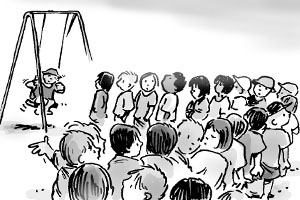
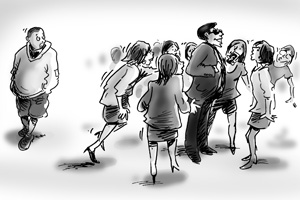

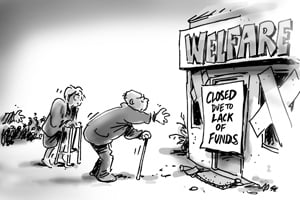
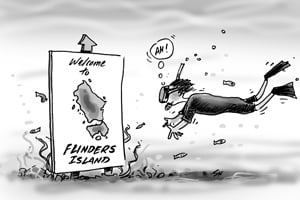
.jpg)







